Weight Gain Exercise: Bulk Up the Smart Way
Why Gain Weight Through Exercise?
Gaining weight through exercise and a strategic diet is the healthiest and most sustainable way to bulk up. Unlike quick fixes or fad diets, this approach ensures you build lean muscle mass while minimizing excess fat gain, embodying the essence of healthy weight gain. Let’s explore the key benefits of how to gain weight and muscle in a sustainable manner:
Health Benefits of Weight Gain
Being underweight can take a toll on your health, energy levels, and immune system. Gaining weight through strength training and proper nutrition can bolster your well-being significantly, making weight exercise a pivotal strategy.
– Boost metabolism and increase muscle mass
– Strengthen bones and reduce osteoporosis risk
– Improve mood, confidence and self-esteem
– Provide more energy for daily activities
Athletic Performance Gains
For athletes and fitness enthusiasts, gaining weight strategically translates to impressive performance gains:
– Increased strength for lifting heavier weights
– More muscle power for explosive movements
– Greater endurance and faster recovery
– Potential for muscle mass to enhance speed and agility
Calorie Surplus: The Key to Weight Gain
To achieve weight gain, especially how to gain muscle, you must consume more calories than your body burns each day – a state known as a calorie surplus. This provides the essential raw materials your body needs to build new muscle tissue and enhance muscle mass.
Calculating Your Calorie Needs
Determining your total daily energy expenditure (TDEE) is crucial for effective weight gain. Online calculators estimate your TDEE based on factors like age, height, weight, and activity level. For weight gain, aim for a 300-500 calorie daily surplus.
Foods to Help You Gain Weight
Focus on calorie-dense, nutrient-rich foods like:
– Lean meats, eggs, dairy, beans and lentils for protein
– Whole grains, potatoes, rice and pasta for complex carbs
– Nuts, nut butters, avocados and oils for healthy fats
– Dried fruits, smoothies and juices for easy extra calories
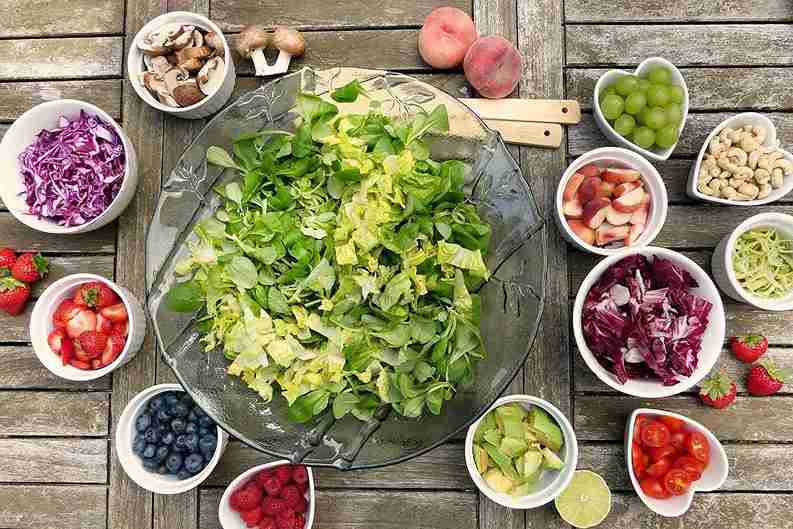
Weight Training for Muscle Growth
Strategic weight training is essential for stimulating muscle hypertrophy (growth) as you gain weight. Embrace the best workout routine for muscle gain by following these guidelines:
Compound Exercises for Maximum Gains
Prioritize multi-joint compound exercises that work multiple muscle groups simultaneously, like:
1.Squats: The squat reigns supreme in the weight gain exercise world. This exercise powerhouse targets your quads, hamstrings, glutes, and core, building muscle mass and boosting your metabolism.
To perform a squat, stand with feet shoulder-width apart, toes slightly outward. Engage your core and keep your back straight as you lower yourself down as if sitting in an invisible chair. Aim for thighs parallel to the ground, then press through your heels to stand back up.
Squats can be done with bodyweight, dumbbells, or a barbell. This versatile exercise is a must-have in any weight gain workout routine for sculpted strength and a toned physique.
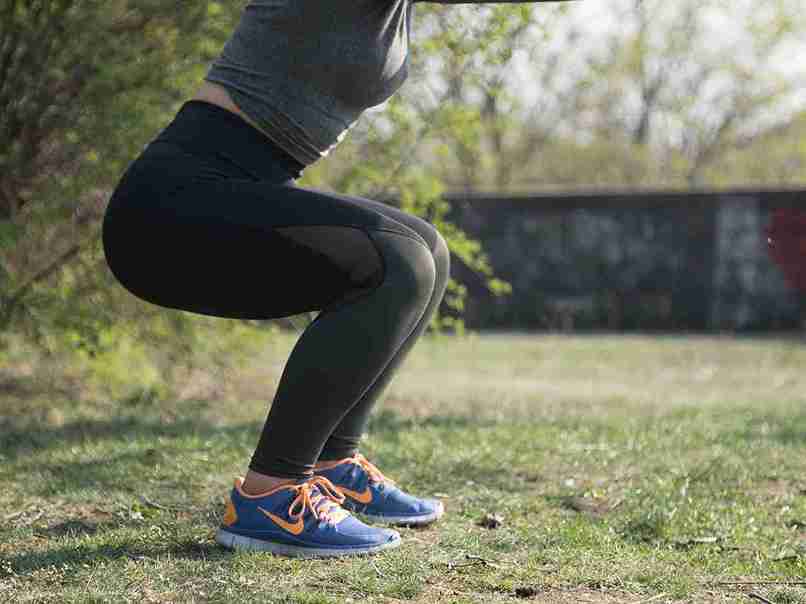
2.Deadlifts: The deadlift is a weight gain exercise worthy of its reputation. This compound lift strengthens your entire posterior chain, including your hamstrings, glutes, lower back, and core, building foundational pulling strength.
Mastering the deadlift form is crucial. Stand with the barbell close to your shins, core engaged, back straight. Hinge at your hips, pushing your glutes back, and lower the bar down your thighs, maintaining a flat back. Once the bar reaches just below your knees, reverse the motion to stand back up, driving through your heels.
Deadlifts are a fantastic weight gain exercise to build overall strength and muscle mass. However, proper form is essential to avoid injury. Consider consulting a trainer for personalized deadlift guidance.

3.Bench Press: The bench press is a weight gain exercise staple, sculpting a strong and defined chest. It also works your shoulders and triceps for a well-rounded upper body workout.
Lie flat on a bench with a barbell positioned slightly above your eyes. Grip the bar wider than shoulder-width apart. Engage your core and arch your back slightly for stability. Lower the bar down to your chest in a controlled motion, then press it back up explosively to the starting position.
For beginners, start with dumbbells to master proper form before progressing to a barbell. The bench press effectively builds upper body strength and muscle mass, making it a key weight gain exercise for a sculpted physique.
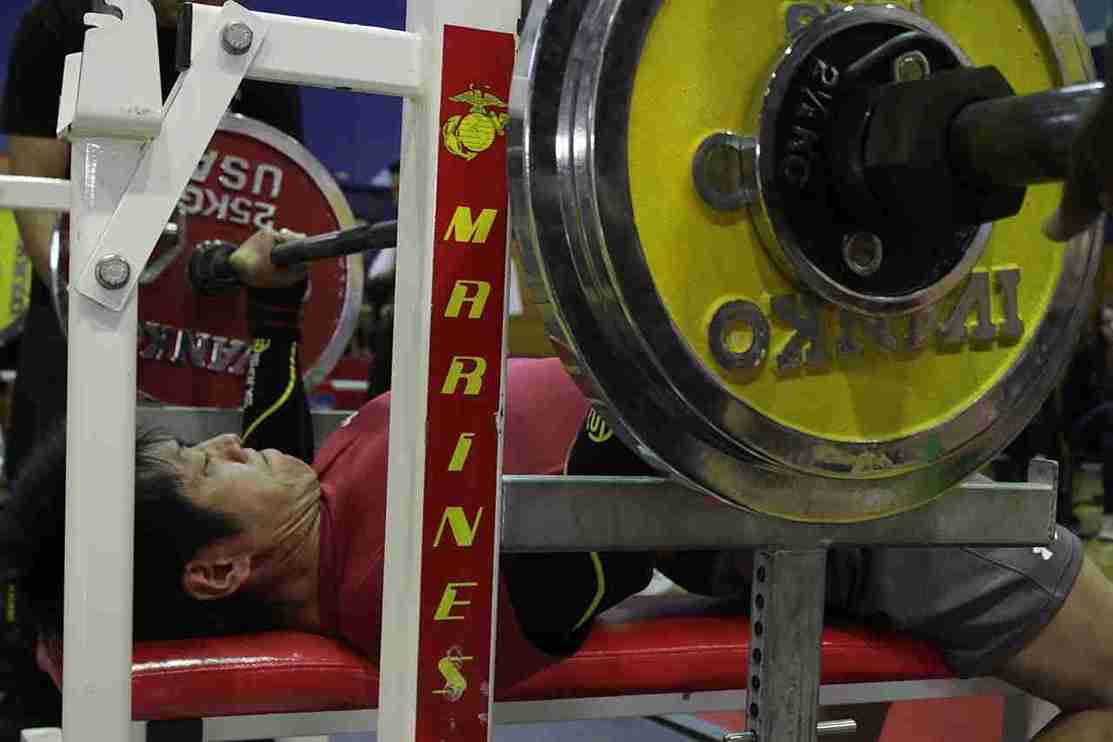
4.Overhead Press: The overhead press is a weight gain exercise that targets your shoulders for impressive definition and strength. It also engages your triceps for a complete upper body workout.
Stand with feet shoulder-width apart, core engaged, and a barbell or dumbbells held directly above your shoulders. Press the weight straight up overhead until your arms are locked out. Slowly lower the weight back down to starting position in a controlled motion.
The overhead press strengthens and defines your deltoids (shoulders) and triceps, contributing to a sculpted upper body. For proper form and safety, consider starting with lighter weights and gradually increasing as you gain strength

5.Barbell Rows: Barbell rows are a weight gain exercise that targets your back muscles, biceps, and core, promoting good posture and pulling strength. This exercise is a must-have for a well-developed back.
Set up with a barbell on the floor, bend at your hips and knees, keeping your back straight. Grip the bar with an overhand grip (palms facing down) wider than shoulder-width apart. Propel the weighted cylindrical apparatus in an upward trajectory, terminating its ascent upon achieving proximity with your pectoral region, while constricting the musculature of your dorsal anatomy. Subsequently, initiate a controlled descent of the cylindrical apparatus, reversing its previous upward course.
Barbell rows effectively build back strength and muscle mass, improving posture and overall balance. This key weight gain exercise is a cornerstone for building a strong, sculpted physique.

6.Pull-Ups: The pull-up is a bodyweight weight gain exercise that reigns supreme for building a strong back and biceps. It requires no equipment, making it accessible anywhere.
Grip a pull-up bar with palms facing away, wider than shoulder-width apart. Engage your core and lift yourself up until your chin clears the bar. Direct your attention towards engaging the musculature situated along your posterior region as the primary driving force, rather than relying solely on the strength of your upper limbs. Subsequently, initiate a gradual and regulated descent, reversing the preceding upward trajectory.
Pull-ups are a challenging but rewarding weight gain exercise. If you can’t perform a full pull-up yet, consider assisted pull-up machines or resistance bands to build the strength needed. This exercise sculpts a defined back and strong biceps, a hallmark of a well-developed physique.
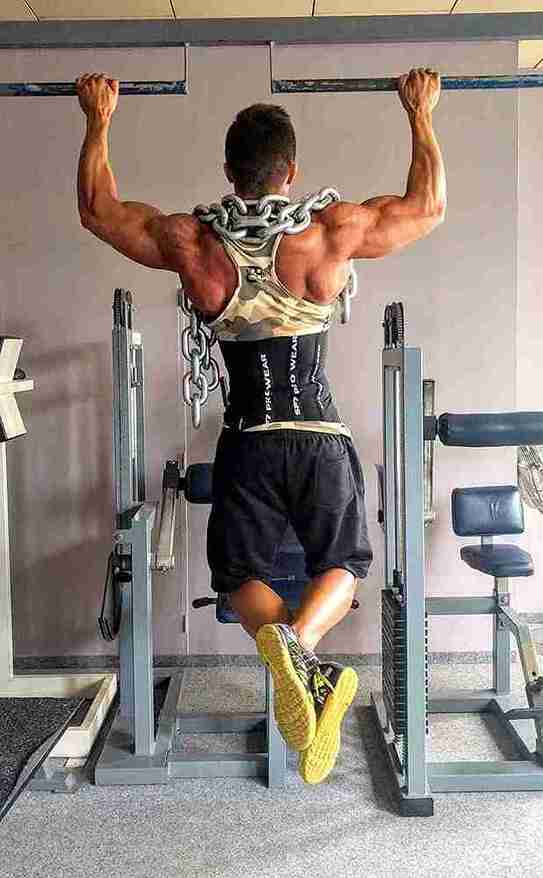
7.Lunges: Lunges are a unilateral weight gain exercise that strengthens your quads, hamstrings, glutes, and core, all in one move. This exercise improves balance and stability while sculpting toned legs.
Advance one of your inferior limbs anteriorly, while simultaneously descending your pelvic girdle until both articulations at the knee joints form right angles. Ensure the anterior knee remains directly perpendicular to the ankle, while the posterior knee avoids contact with the terrestrial surface. Exert propulsive force through the calcaneal region of the forward foot to regain an erect, standing posture. Reiterate this sequence, initiating the movement pattern with the opposite limb leading.
Lunges can be done with bodyweight, dumbbells, or a barbell. This versatile weight gain exercise is a great way to build lower body strength and improve overall balance for a sculpted and functional physique.
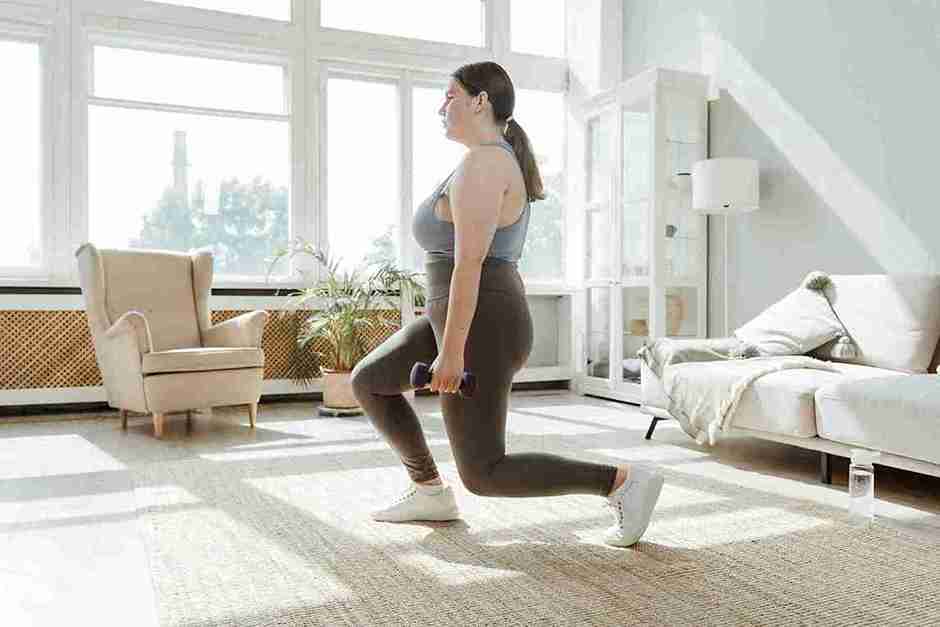
8.Dips: Dips are a bodyweight weight gain exercise that sculpt powerful triceps for sculpted arms. They can be done using parallel bars, a dip station, or even a sturdy chair at home.
Grip the bars with palms facing inward, shoulder-width apart. Engage your core and straighten your arms to lift yourself up. Slowly lower yourself down until your elbows reach a 90-degree angle, keeping your back straight. Push back up to the starting position in a controlled motion.
Dips effectively target your triceps for impressive definition and strength. However, they can be challenging. If needed, start with assisted dips using a dip assist machine or by placing your feet on a platform for partial dips. This bodyweight exercise is a great way to build strong, sculpted arms.

9.Dumbbell Romanian Deadlifts: The dumbbell Romanian Deadlift (RDL) is a weight gain exercise targeting your hamstrings and glutes for improved flexibility and a sculpted posterior chain.
Hold dumbbells close to your thighs, core engaged, back straight. Hinge at your hips, pushing your glutes back, and lower the dumbbells down your legs. Maintain a flat back as you lower the weights until they reach your shins or slightly below. Squeeze your glutes and hamstrings to return to standing upright.
Dumbbell RDLs effectively isolate and strengthen your hamstrings and glutes, improving overall leg strength and definition. This targeted weight gain exercise is a valuable addition to any workout routine for a well-developed lower body.
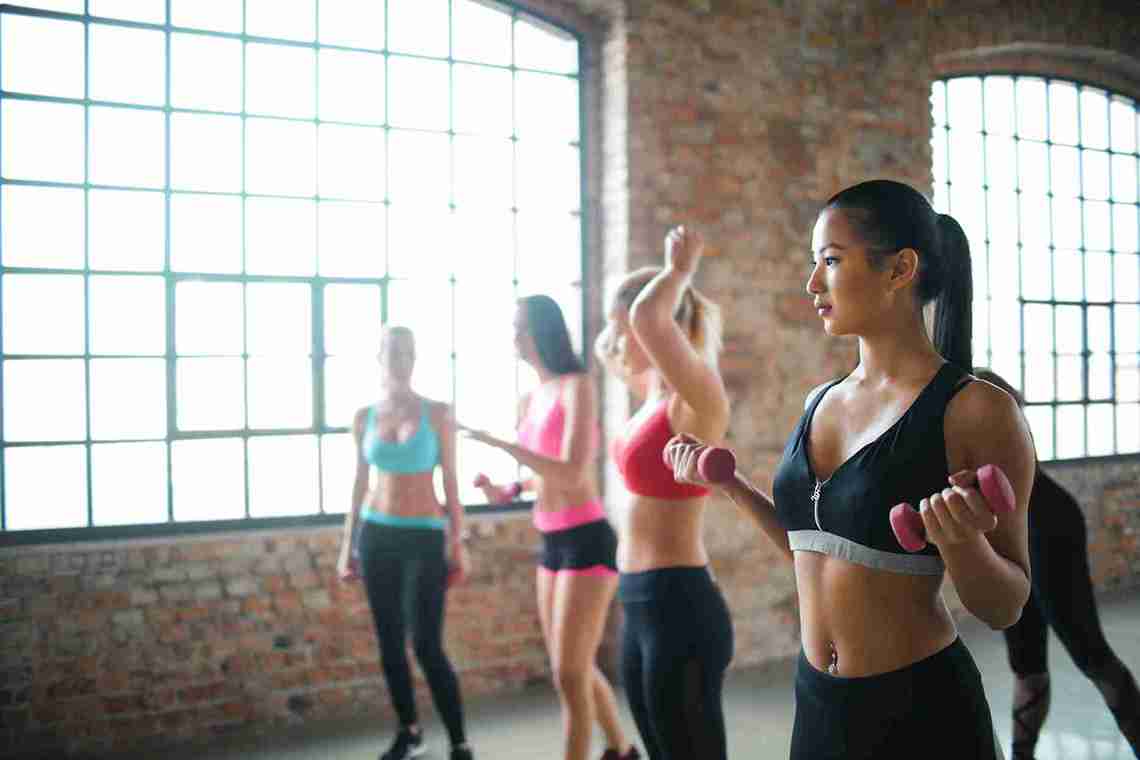
10.Glute Bridges: Glute bridges are a bodyweight weight gain exercise that tightens and strengthens your glutes and core, promoting stability and a sculpted backside.
Position yourself in a supine orientation, with your posterior region making contact with the underlying surface, while your knee joints are flexed and your plantar surfaces rest firmly upon the floor in an abducted position, mirroring the breadth of your pelvic structure. Engage your core and lift your hips off the ground until your body forms a straight line from knees to shoulders. Squeeze your glutes at the top, then slowly lower your hips back down to the starting position.
Glute bridges are a beginner-friendly weight gain exercise that can be progressed by adding weight with a barbell or dumbbells placed across your hips. This exercise effectively builds glute strength and improves core stability, contributing to a toned and functional physique.
For muscular hypertrophy, stick to the 6-12 rep range using weights that feel challenging by the last couple of reps. Adjust weight accordingly as you get stronger, aligning with strength training principles.

The Importance of Progression
Progressive overload is key – gradually increasing weight, reps, or training volume over time to spur further muscle growth as you gain weight, a fundamental strategy for those aiming to increase muscle mass.
Other Exercise Options for Weight Gain
While weight training is paramount, complementary training can provide a metabolic boost:
High-Intensity Interval Training (HIIT)
Short HIIT workouts can maximize calorie burn to make gaining weight easier. Examples:
– Battle ropes, sled pushes, burpees
– Cycling or rowing intervals
– Basketball games or sprints
Sports and Activities
Playing sports or enjoying active hobbies like hiking also contributes to your total calorie expenditure, an aspect often overlooked when aiming for gaining weight while working out.
Protein: The Building Block of Muscle
Protein provides the amino acids that are the building blocks of new muscle tissue.
How Much Protein Do You Need?
For muscle growth, aim for 0.7-1 gram of protein per pound of body weight daily from food and supplements, a cornerstone advice for those wondering how to gain muscle and build muscle mass effectively.
Protein Sources for Weight Gain
Great options include:
– Lean meats like chicken, turkey, beef and pork
– Fish and seafood
– Eggs, cottage cheese, Greek yogurt
– Protein powder shakes or smoothies
– Beans, lentils, soy products
Rest, Recovery and Sleep
Working hard in the gym is only half the battle – you also need to recover properly.
Allowing Muscles to Grow
Muscles grow during the rest and recovery period between intense workouts, not just during exercise itself, highlighting the importance of muscle building strategies.
Optimizing Sleep for Gains
Getting 7-9 hours of high-quality sleep per night is crucial, as this is when the majority of muscle repair and growth occurs due to increased growth hormone levels.
Weight Gain Supplements
While a balanced diet is ideal, supplements can help meet your increased nutrient demands.
Protein Powders and Weight Gainers
Whey, casein, and plant-based protein powders provide a convenient way to boost your protein intake, essential for those wondering how to gain weight and muscle. Mass gainers are calorie/protein-dense supplements tailored for this goal.
Creatine and Other Ergogenics
Creatine monohydrate increases lean mass and strength gains, making it a go-to for anyone looking into how to increase muscle mass. Other useful supplements include beta-alanine, citrulline malate, and HMB.
Setting Weight Gain Goals
Set realistic, specific goals to track your progress and stay motivated.
Realistic Timeline Expectations
An often-cited rule of thumb for weight gain is aiming to gain around 0.25-0.5% of your bodyweight per week, equating to 0.5-1 lb for a 200 lb person. Adjust calories up or down as needed to meet this target.
Tracking Progress Over Time
Regularly measure your weight, body circumferences, lifts in the gym, body composition, and take progress photos to ensure you’re gaining quality weight, focusing on both weight gain and increasing lean body weight.
Conclusion
Gaining weight and building muscle through dedicated exercise and strategic nutrition takes time and hard work – but the rewards, including weight gain, how to gain muscle, and strength training, are well worth it. With proper programming, diet, recovery, and consistency, you can bulk up the smart way while staying lean and optimizing your health along the journey. Stay motivated, trust the process, and you’ll be amazed by your transformation!
No, you don’t need to force-feed yourself huge portions to gain weight effectively. Aim for a 300-500 calorie daily surplus from nutrient-dense foods for a moderate increase. Smaller, more frequent meals and snacks can make it easier to meet your calorie goals.
The key to healthy weight gain is a controlled, steady rate of about 0.5-1 lb per week. Gaining weight too rapidly can lead to excessive fat rather than muscle. A slow and steady approach ensures quality weight gain.
Stick with it, make sustainable lifestyle changes, and you’ll see the payoff in the mirror and the weight room. Don’t get discouraged – building a significantly more muscular physique takes months and years of hard work and dedication. But your future self will thank you for the effort to build muscle!
With strategic strength training, proper nutrition, and adequate rest and recovery, you can absolutely transform your body composition through weight gain exercise. Trust the process, be patient and consistent, and you’ll bulk up in a way that optimizes muscle growth while staying lean and healthy. It’s the smart way to build the body you’ve always wanted!
FAQs
How long does it take to build noticeable muscle?
It typically takes 3-6 months of consistent weight training and a calorie surplus to build appreciable amounts of muscle that result in a visibly larger, more muscular physique, a key aspect of how to gain muscle mass. Individual rates of muscle growth can vary substantially.
Is it possible to build muscle while losing fat at the same time?
For beginners, it's possible to build muscle and lose some fat simultaneously, in a process known as body recomposition. However, beyond the novice stage, trying to gain muscle and lose fat at the same time becomes extremely difficult. It's better to focus on one goal or the other, aligning with strategies for weight gain and how to gain muscle.
How many days per week should I train for weight gain?
For optimal muscle growth, most experts recommend engaging in strength training 3-6 days per week, targeting each major muscle group 2-3 times with at least one full rest day. For those more advanced, a higher frequency may enhance your workout plan.
Do I need to eat a ton to gain weight?
No, you don't
Can women gain muscle as easily as men?
While men naturally have higher levels of muscle-building hormones like testosterone, women can still build an impressive lean body weight through proper weight training and nutrition. The journey might be slightly slower, but the fundamental principles of how to gain muscle remain consistent.




